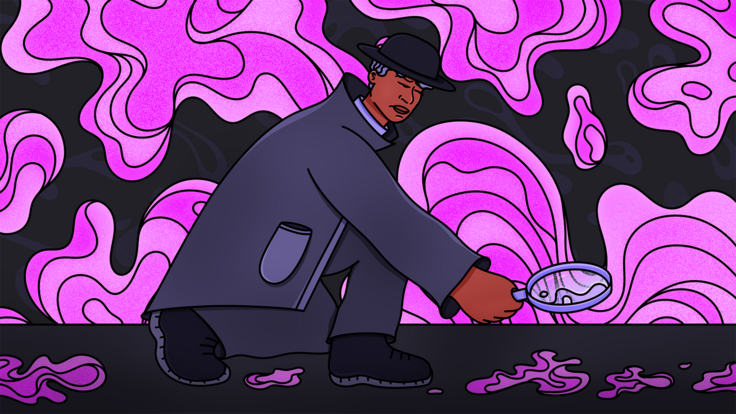
Could you spot the Higgs in this simulated decay of a Higgs boson? Finding a needle in the haystack is even harder when you can't see the hay or the needle. (Credit: CERN)
With the news that the CMS and ATLAS experiments, housed at CERN, will reveal the latest results in the search for the Higgs boson in a seminar on July 4, speculation abounds. The rumor mill has predicted everything from a flat-out discovery of the Higgs to an increase in significance for evidence of a particle consistent with the Standard Model Higgs boson. And, even though it’s not getting much press this week, there’s still the possibility that hints found in the 2011 data haven’t reappeared in this year’s data.
If the Higgs exists, why has discovering it taken so long – and why, if no definitive discovery is announced next week, might it continue to take even longer?
The short answer is that hunting for a subatomic particle is not as easy as it may seem. The predicted Higgs is rare and cannot be observed directly. The large amount of data required to see evidence of the Higgs makes the possibility that any observed excess is a statistical fluke very real. Before claiming a discovery, researchers need to catch more than a fleeting glimpse of the Higgs. They need more than hints or evidence – they need a slam-dunk.
Following the crumbs
If the Higgs exists, a fraction of a second after it’s created in the Large Hadron Collider, it will decay into other particles in one of several different ways. Since the Higgs wouldn’t last long enough to be spotted by the detectors, researchers sift through the secondary particles for combinations expected to result from Higgs decays. Each decay route, or channel, has different features that offer something to the experiments. For example, at a mass of about 125 GeV, scientists expect the Higgs boson to decay into a bottom quark pair about 60 percent of the time. But there are a lot of background events that can mimic this Higgs decay, making it difficult to spot the possible Higgs events.
In essence, researchers are looking not to see the Higgs itself, but rather the trail it leaves behind – a trail similar to what’s left by other particles. And that requires a huge amount of data and very careful analysis.
ATLAS and CMS looks for the Higgs in several decay channels, including the Higgs decaying into two photons, two W bosons, two Z bosons, a bottom quark pair (bottom quark and antibottom quark) and two tau particles.
By looking in those channels, the experimenters should be able to piece together the resulting particles and follow the crumbs to the originating Higgs.
Statistics are cruel
But even if researchers see a clear signal above noise made by other decaying particles, it could be due to statistical fluctuations or systematic effects and not a real observation.
For a discovery in particle physics, “five sigma” is usually the accepted statistical threshold. At five sigma, the probability for a statistical fluke to produce a signal as large as the observed result is less than one in three and a half million.
“We use five sigma because it’s very restrictive, and we don’t want to be wrong,” said Kyle Cranmer, a physicist and the convener of the statistics forum on ATLAS.
But, in the case of the Higgs boson, Cranmer explained that it’s not just about a five-sigma result, but the consistency of the story told by the individual channels.
What happens if scientists see a clear, five-sigma signal in one channel, but not in all of the channels where scientists expect to see evidence of the Higgs boson? That would mean that they observed something new, but it might not be the Higgs.
“Generally, if you have five sigma in every channel, most people would tend to agree that we have a discovery,” said Don Lincoln, a CMS physicist working on the analysis. “If both CMS and ATLAS make consistent measurements and the properties they see are the expected ones, most people would claim it’s the Standard Model Higgs. If one experiment sees something, but not both, we’d all be suspicious.”
If researchers from both experiments see compelling evidence in only one channel, they can say they see something, but they don’t know what. If it’s not in multiple channels, it’s probably not the Standard Model Higgs. Instead, it could instead be a hint of physics beyond the Standard Model.
That’s the crux – it’s exceedingly difficult to see the full story when it’s hidden behind a thick cloud of background noise and potential statistical flukes. But without the full story, it’s impossible to say definitively whether you’ve seen a particular particle (in this case, the Higgs), some other new particle or nothing but noise and flukes.
Nonetheless, physicists at the LHC continue their hunt undeterred. We’ll find out just how close they are to the full story at the July 4 press conference.
For more on the long, careful path from intriguing data to official discovery, see Are we there yet?, published in the April 2010 issue of symmetry.






